Côte de Nuits
Introduction
The northern half of the Côte d’Or escarpment, the Côte de Nuits gets its name from one of its most famous villages: Nuits-Saint-Georges. Stretching 20 kilometres from Dijon to Nuits-Saint-Georges and expanding between 200-800 metres wide, this illustrious region covers 3600 hectares.
Within this, it boasts an impressive number of grand crus vineyards where the Pinot Noir grape rules supreme. Travelling through the region, you will see the slopes adorned with vines, periodically broken up by barren, rocky outcrops or limestone quarries in the south. The soils lower down the slopes are more fertile, whilst narrow strips higher up the hillsides provide exceptional terroir, albeit with less vine vigour.
Although reputed for its red wines, the Côte de Nuits also produces a small amount of high-quality whites too. Simply put, it is home to some of the greatest Pinot Noirs in the world.
Contact us to place your order: [email protected] | 020 7265 2430
The northern half of the Côte d’Or escarpment, the Côte de Nuits gets its name from one of its most famous villages: Nuits-Saint-Georges. Stretching 20 kilometres from Dijon to Nuits-Saint-Georges and expanding between 200-800 metres wide, this illustrious region covers 3600 hectares.
Within this, it boasts an impressive number of grand crus vineyards where the Pinot Noir grape rules supreme. Travelling through the region, you will see the slopes adorned with vines, periodically broken up by barren, rocky outcrops or limestone quarries in the south. The soils lower down the slopes are more fertile, whilst narrow strips higher up the hillsides provide exceptional terroir, albeit with less vine vigour.
Although reputed for its red wines, the Côte de Nuits also produces a small amount of high-quality whites too. Simply put, it is home to some of the greatest Pinot Noirs in the world.
Contact us to place your order: [email protected] | 020 7265 2430
APPELLATIONS
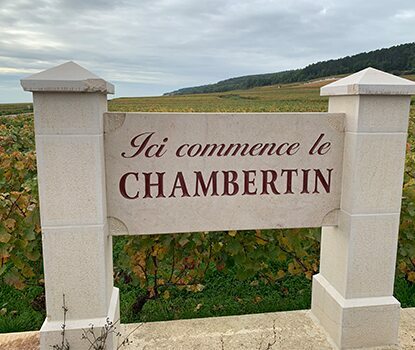
GEVREY-CHAMBERTIN
For many, Gevrey-Chambertin needs little introduction. Home to some of the world’s most iconic reds, it has been a source of prestigious Pinot Noir for centuries – in fact, Gevrey-Chambertin was believed to be Emperor Napoleon’s favourite wine!
In 1847, Gevrey hyphenated its name to that of its finest vineyard, Chambertin, which was dubbed the ‘king of wines and wine of kings’ – a phrase that still resonates today.
Stretching across 410 hectares, from Brochon in the north to Morey-Saint-Denis in the south, it is the largest wine-producing village within the Côte d’Or. It includes an astonishing nine Grand Crus, more than any other village, which are matched if not surpassed by a handful of Premier Crus.
The complexity and variety of styles on offer here are owing to the diverse terroir, with patches of limestone, and world-renowned winemakers.
Domaine Trapet 2021
Domaine Rossignol Trapet
Domaine du Couvent
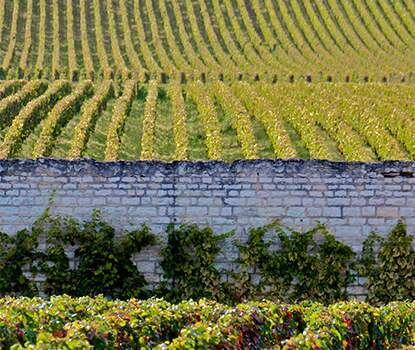
MOREY-SAINT-DENIS
The second-smallest village of the Côte de Nuits, Morey-Saint-Denis, is often overshadowed by its more famous neighbours; Gevrey-Chambertin to the north and Chambolle-Musigny to the south. Geologically, it shares similarities with both of these villages, with a stratum of limestone running through all three appellations. It is, therefore, unsurprising that Morey-Saint-Denis wines have comparable qualities with its bigger siblings.
Encompassing four Grand Crus: Clos des Lambrays, Clos de la Roche, Clos Saint-Denis and Clos de Tart, with a fifth Grand Cru overlapping from Chabolle: Bonnes Mares, each expresses their own unique definition of Pinot Noir.
The self-contained nature of this village is echoed in the abundance of walled vineyards – all adding to the charm and individuality of this place.
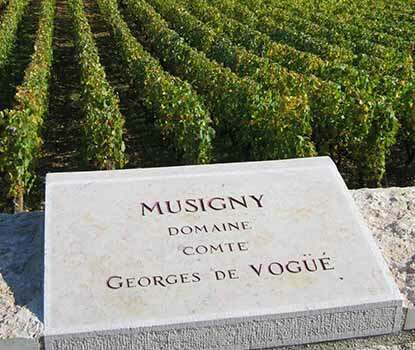
CHAMBOLLE-MUSIGNY
Snug against the limestone cliff faces and perhaps feeling a little isolated from the rest of the Côte, there is something magical about Chambolle-Musigny. The red wines hailing from here offer rich and velvety elegance, combining soaring perfume and tannic structure.
Encompassing two Grand Cru vineyards: Musigny and Bonnes-Mares, at the southern and northern extremes of the village respectively, and a Premier Cru worthy of being promoted: Les Amoureuses.
The east-facing slopes lie at 250-300 metres based on Jurassic limestone and benefit from excellent free-draining gravel soils descending towards the valley floor.
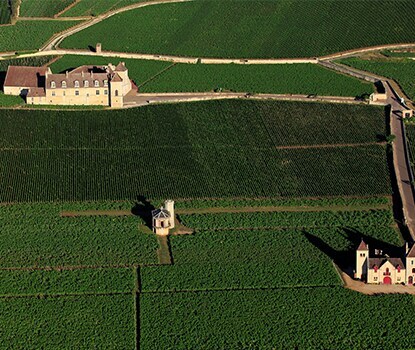
VOUGEOT
A small village in the Côte de Nuits producing fine wines from the classic Burgundian varieties, Pinot Noir and Chardonnay. The most significant vineyard in Vougeot is the Grand Cru Clos de Vougeot – a 50 hectare enclosed plot that was originally planted by Cistercian monks. From the beginning, this special vineyard was noted for its varying terroir: the top contains light calcareous and gravelly soil over limestone, the middle section reveals softer limestone with clay and a smattering of gravel, while the bottom is almost flat and consists of poorly drained alluvial clay. The monks typically blended across these sites to make their wines, whereas today, Clos de Vougeot is fragmented between 80 or more owners, who make varying styles.
This Clos isn’t the only place to find excellent reds, however – Vougeot can be a source of extremely long-lived Pinot Noirs and excellent Chardonnays, which, in combination with deft winemaking and increasing use of stems and whole bunches, can also display great elegance. Perhaps here more than anywhere else in Burgundy, ‘grower is everything’.
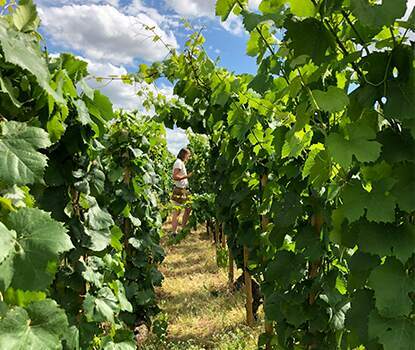
VOSNE-ROMANÉE
A village within the Côte de Nuits district, Vosne-Romanée is arguably the pinnacle of the world’s finest Pinot Noir. Including six of the most renowned Grand Crus – La Romanée-Conti is the bull’s eye, surrounded by La Romanée, La Tâche, Richebourg, Romanée-Saint-Vivant and La Grande Rue. It is also home to the hallowed Domaine de la Romanée-Conti (DRC), yet, in the understated village square, there is little to suggest what greatness lies on the slopes beyond.
The soils here are largely limestone mixed with clay marls with an easterly exposure. The wines offer more finesse than most rivals but still retain the power and depth of character. This appellation is reserved for Pinot Noir only.

NUITS SAINT GEORGES
A small Burgundian market town with huge vinous significance, Nuits-Saint-Georges is the most southerly appellation of the famous Côte de Nuits. Home to the famous ‘wine brotherhood’, Confrérie des Chevaliers du Tastevin, it is also from which the Côte de Nuits takes its name.
Covering a substantial 300 hectares of vines, Nuits-Saint-Georges has extremely varied soils and aspects. Perhaps surprisingly, there are no Grand Crus within this appellation, but it does boast an impressive 41 Premier Crus.
Pinot Noir dominates here with three approximate divisions in wine style: in the north (nearing Vosne), the reds offer elegance with a hedonistic richness; at the heartland of the appellation, just south of the town, the wines are full, with depth of colour and tannic structure; the furthest south, you can find the lighter and more delicate styles. There are also just seven hectares dedicated to white wine production.
Domaine de L'Arlot
